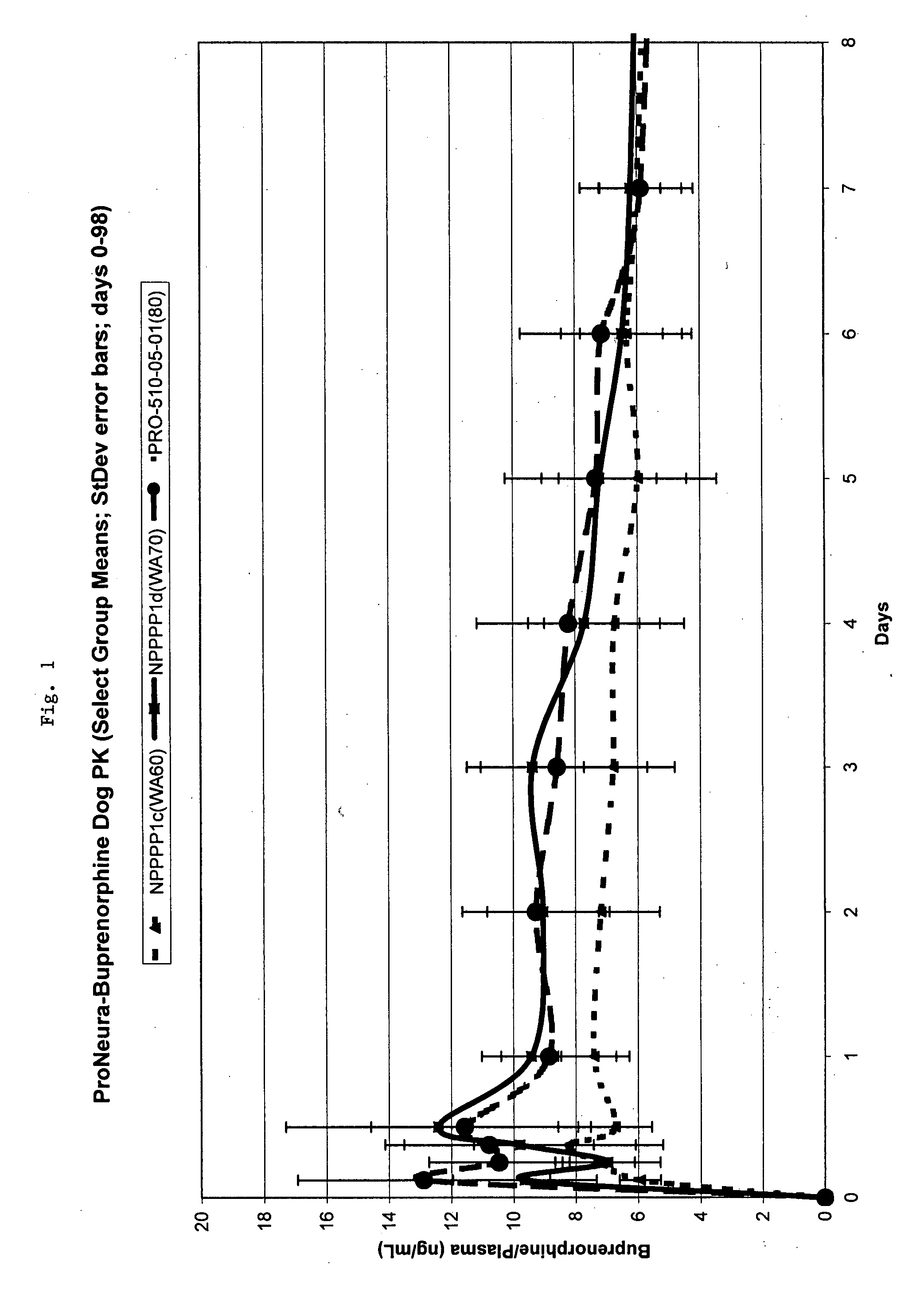Implantable polymeric device for sustained release of buprenorphine with minimal initial burst
a polymer device and buprenorphine technology, applied in the direction of biocide, bandages, heterocyclic compound active ingredients, etc., can solve the problems of inability to meet the dosing scheme, poor compliance with the dosing scheme, and inability to administer enteral drugs in patients with particular indications, etc., to reduce the initial burst of buprenorphine, and reduce the effect of peak steady state ratio ratio
- Summary
- Abstract
- Description
- Claims
- Application Information
AI Technical Summary
Benefits of technology
Problems solved by technology
Method used
Image
Examples
example 1
Preparation of Buprenorphine-Containing Polymeric Implants
[0054] Polymeric implants were prepared by twin screw hot melt extrusion. The extrusion process involved subjecting an EVA and buprenorphine HCL blend (75% buprenorphine / 25% EVA) to pressure and heat with a Thermo-Prism Twin Screw Extruder. The extruder melted the EVA and formed it into long thin segments of solid material (the extrudate). The extrudate was cut manually into segments of approximately 15 (+ / −3) inches in length as the material was extruded. (The lengths were arbitrarily chosen based on ease of handling). The segments were then cut into implants with a predetermined length specification of 26 mm.
[0055] The implants were washed in 190 proof ethanol USP for different lengths of time remove surface buprenorphine and to reduce the drug load to a desired level. Implants with 75% buprenorphine were washed with ethanol for 250 minutes to produce implants containing 60 mg of buprenorphine (58% w / w) or for 125 minutes...
PUM
| Property | Measurement | Unit |
|---|---|---|
| Length | aaaaa | aaaaa |
| Length | aaaaa | aaaaa |
| Fraction | aaaaa | aaaaa |
Abstract
Description
Claims
Application Information
 Login to View More
Login to View More - R&D
- Intellectual Property
- Life Sciences
- Materials
- Tech Scout
- Unparalleled Data Quality
- Higher Quality Content
- 60% Fewer Hallucinations
Browse by: Latest US Patents, China's latest patents, Technical Efficacy Thesaurus, Application Domain, Technology Topic, Popular Technical Reports.
© 2025 PatSnap. All rights reserved.Legal|Privacy policy|Modern Slavery Act Transparency Statement|Sitemap|About US| Contact US: help@patsnap.com


